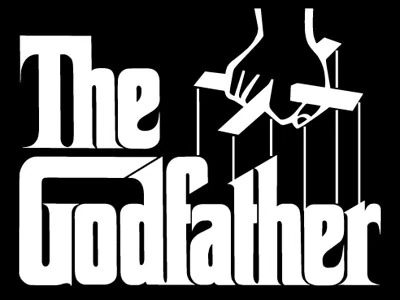The Godfather and the Hero’s Journey: A Descent into Power
Leave the good son, take the twist.
If you’ve been writing for longer than it takes to microwave a cup of leftover coffee, you’ve heard of story structure. Aristotle gave us three acts and a headache. Robert McKee’s Story is a personal favorite—equal parts brilliance and browbeating. Save the Cat? Great structure, absurd page math. I never bought into the idea that character transformation is tied to page 25 like some metaphysical parking meter.
There’s the Seven-Act Structure (which I lean toward), the Dan Harmon story circle, Pixar’s twenty-two rules, the Plot Pyramid, the Snowflake Method. Honestly, if you stack all these frameworks together, you could build a ladder to the top of the bestseller list—or the rejection pile.
But one framework towers above them all, draped in myth and studio notes: The Hero’s Journey.
Joseph Campbell called it the “monomyth.” It’s the narrative skeleton of legends, sagas, and box office smashes. You’ve seen it before: Luke, Frodo, Neo, Moana. But today isn’t about the noble hero.
It’s Monday. So let’s talk Michael Corleone.
You’ve seen The Godfather, right? If not, close this tab. Go watch it. Then watch it again. Then return, humbled and spiritually nourished.
We’re about to follow the Hero’s Journey down a darker road—one paved not with destiny, but with betrayal, ambition, and exceptionally good tailoring.
The Hero’s Journey: The Greatest Hits
Let’s quickly review the 12 stages of Campbell’s classic structure:
1. Ordinary World
2. Call to Adventure
3. Refusal of the Call
4. Meeting the Mentor
5. Crossing the First Threshold
6. Tests, Allies, Enemies
7. Approach to the Inmost Cave
8. Ordeal
9. Reward (Seizing the Sword)
10. The Road Back
11. Resurrection
12. Return with the Elixir
Normally, this structure is about transformation through struggle.
The hero returns wiser, stronger, morally elevated. But Michael Corleone isn’t that kind of hero.
His journey fits the mold. It just burns the morality in the process.
1. Ordinary World: Ivy League and Innocence
Michael starts out clean. The war hero. The college kid. The boyfriend who tells Kay, “That’s my family, Kay. It’s not me.”
That’s not just a line—it’s a worldview. Michael sees himself as outside the machine, sipping wine while the gears turn.
Spoiler: he’s wrong.
2. Call to Adventure: A Hit Too Close to Home
Don Vito gets shot. Suddenly the family business isn’t background noise—it’s front-page news and hospital corridors.
Michael steps in to protect his father, not out of ambition, but out of love. That’s the brilliance of it. The call doesn’t come with trumpets. It comes with a half-lit hallway and a guy rearranging flowers.
3. Refusal of the Call: No, Thanks—I’m Good
Michael wants no part of it. He’s not like Sonny. He doesn’t crave power. He believes—truly—that he can stay untouched.
This is the part of the journey where the hero says, “Nah, I’m not the guy.” Which is usually when fate smirks and rolls up its sleeves.
4. Meeting the Mentor: A Crash Course in Criminality
Michael doesn’t get a single Obi-Wan. He gets a supporting cast of tutors:
• Tom Hagen with the legal-sounding logic.
• Clemenza, who teaches him how to cook and kill—a true multitasker.
• And of course, Don Vito, whose quiet wisdom prepares Michael not to follow in his footsteps, but to surpass them.
5. Crossing the Threshold: Dinner and a Double Homicide
Michael shoots Sollozzo and McCluskey in a Bronx restaurant. It’s not just a plot point—it’s a transformation.
This is where the “civilian” identity dies. He crosses into the underworld. Literally. There’s a toilet tank involved.
6. Tests, Allies, Enemies: Sicilian Honeymoon Edition
In Sicily, Michael tries to hit the reset button. He marries Apollonia. He walks under olive trees. He forgets to check his car for explosives.
Meanwhile, Sonny’s dead. The family’s at war. Michael learns that running doesn’t delay fate—it just makes it madder.
7. Approach to the Inmost Cave: The Accidental Don
Back in New York, the Don is fading. Michael starts making moves.
This is less “approach” and more “hostile takeover.” He’s calm, calculated, wearing darker suits. The heir apparent isn’t a hothead like Sonny. He’s a chess player.
8. The Ordeal: Baptism and Bloodshed
Michael becomes godfather to Connie’s child while simultaneously ordering the execution of all his enemies.
It’s elegant. It’s brutal. It’s cinema.
It’s also the moment he fully becomes what he swore he wouldn’t.
9. Reward: Don Michael
He wins. The throne is his.
But unlike most heroes, his reward isn’t freedom or clarity or even love. It’s control. The crown fits—but it chokes.
10. The Road Back: Selling the Lie
He tells Kay the family will be legitimate.
Sure. And the horse sleeps in the master bedroom.
This is the illusion of a return—the hero pretending they can still go home. But the home’s already gone. So is he.
11. Resurrection: The Transformation Complete
Michael isn’t reborn. He’s reforged.
Sharper. Colder. More dangerous than his father ever was. He doesn’t lead with loyalty. He leads with fear.
This is the final version of the man. No more denials. Just decisions.
12. Return with the Elixir: A Closed Door
The last image of The Godfather is Michael receiving respect—and Kay being shut out.
He brings something back from his journey. Power. Legacy. Empire.
But not love. Not redemption. Not even self-awareness.
Just the elixir of control—and the silence that comes with it.
Final Thoughts: The Journey in Reverse
Michael’s arc is the Hero’s Journey turned upside down. It hits every beat, but each one rings hollow. Or darker. Or more honest. He doesn’t overcome temptation—he makes it policy. He doesn’t return to the light—he replaces the bulb with something colder. And in the end, he closes the door not just on Kay—but on the man he used to be.
Because sometimes, the journey doesn’t save the hero.
It just gives him a better seat at the table.
Tony Sarrecchia


